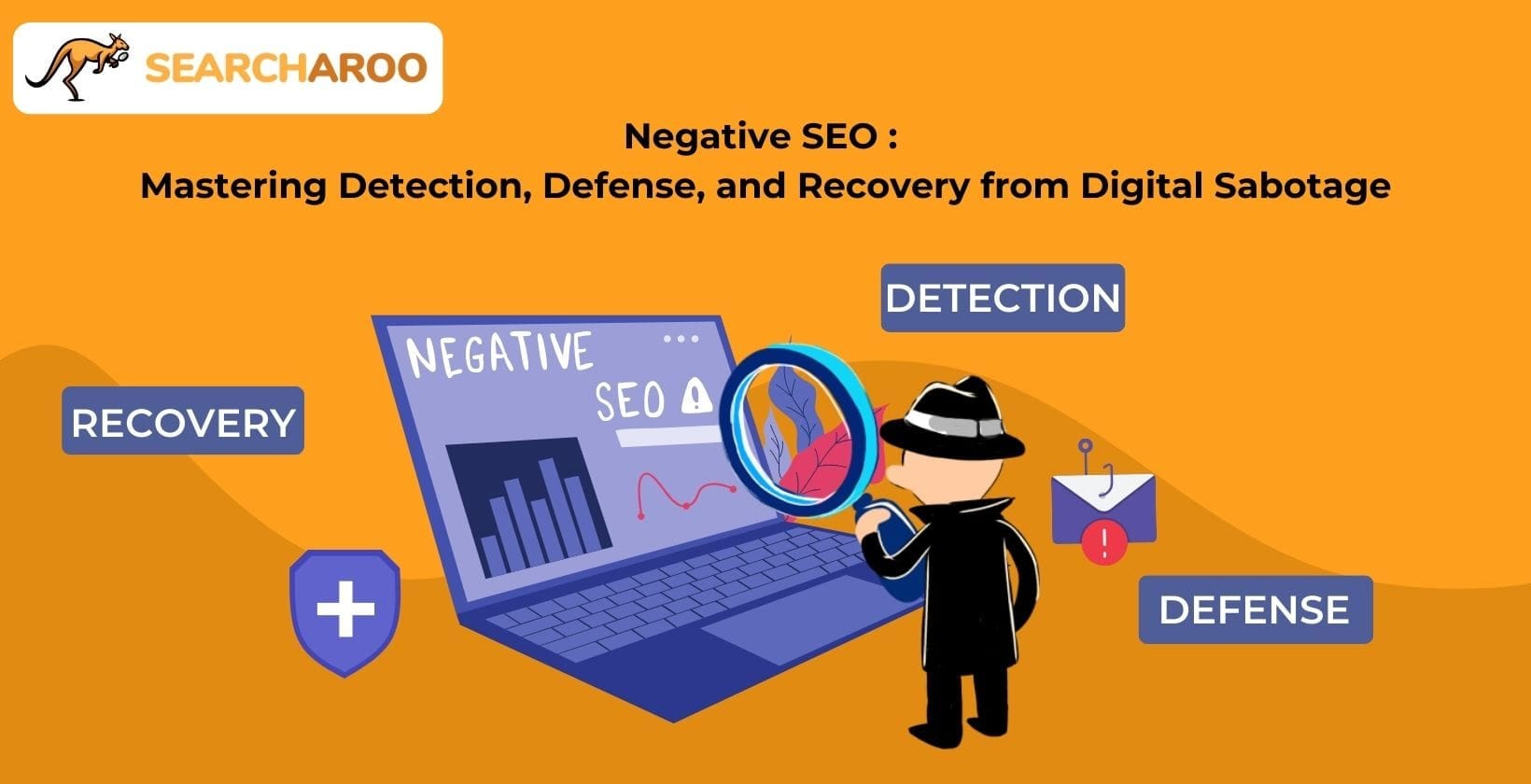Website traffic is an important metric to measure and directly influences your site’s success.
However, that does not mean that it is easy to drive more traffic to your website, especially not as a new online business owner.
This is a problem that most businesses face early on, and even some long-running businesses can occasionally struggle to secure the web traffic they need.
Thankfully, there is a huge range of different ways to boost the amount of traffic that your website receives.
While it would be impossible to list every version of every technique, it is important to understand the many ways to increase website traffic.
Taking the right steps toward increasing traffic can significantly elevate your business. One essential step is to perform proper keyword research.
Perform Proper Keyword Research
Keyword research sits at the heart of everything you do with marketing.
Keywords are not just meant for ads or SEO—they define how your site appears to others and how you can promote it across various platforms.
If you want to draw traffic to your site, you need to understand the keywords involved in your site and the platforms from which you are trying to draw people.
Relevant keywords could be anything from a product name to obscure industry terms, but they must be relevant.
Consider the relevant keywords to capture maximum traffic for an article about cars. The traffic potential increases significantly if your business focuses on car-related keywords in a relevant field or niche. Below are some ways to perform proper keyword research.
Understanding Keywords
A target keyword is a term that you target for all kinds of marketing options, from SEO tools to search ads. Generating traffic means using these keywords in a way that appeals to your target audience.
Keywords have two major metrics: search volume and difficulty. Search volume is the number of people who search that keyword (increasing its traffic potential), while difficulty is how hard it would be to rank for that keyword (since many other businesses may be using it).
Relevant keywords are always important, but if you want to drive traffic to your site, you must choose which ones to focus on.
There are no wrong answers: some businesses focus on the most relevant traffic sources, while others prioritise the most popular or least difficult keywords.
Choosing Keywords
Whether you use them as SEO tools or to help create quality content, you want to insert the right keywords into your site, prod
Boost website traffic with effective strategies like keyword research, quality content, social media, SEO, and email marketing for long-term success.uct page, or blog content.
Good keywords are terms that users in your target audience are likely to search for but are not so overused that your business will barely ever appear.
This means finding a balance between precise and vague keyword terms.
Long-tail keywords can be tricky; not all users search with them. However, depending on your business’s market, some are precise enough to be useful. This highlights the importance of creating good content to drive traffic to your website.
Create Good Content to Drive Traffic to your Website

Content marketing is the backbone of many websites, and for a good reason.
Not only does it help you rank higher in search engines, increasing your visibility, and more effectively drives traffic towards your business than many other methods.
If you create content that people want and make that content visible on a wider scale, you are far more likely to get greater web traffic.
However, this depends entirely on how you use the content you create.
Making Lists
Lists are incredibly versatile. If you care about increasing website traffic through making content that pushes people to engage, then lists are some of the most useful.
Not only does list content (like “top 10 bedroom furniture options”) secure a lot more attention than normal content, but it can also provide a great space to include details like product names, calls to action, or connections to your services.
Why lists?
While list content might not be the most comprehensive blog post type you can come up with, it tends to increase web traffic for a while.
Creating lists relevant to your business’s services can often be an easy way to promote your services and products.
Remember: lists are good for driving traffic to your website but not making people convert. A list alone will not offer much—you will need another format or technique to help secure those visitors as customers.
Write Evergreen Content
Relevancy is important for all content marketing, so evergreen (constantly relevant) content can be invaluable.
Content can quickly become outdated online, and old articles sometimes need regular refreshing to stay current.
Even articles about older subjects can be invalidated if a new version of that thing is released.
Evergreen content, including FAQ pages, reference guides, tutorials, or “serious” content meant to educate the reader.
These tend to be useful for a long time, providing a stable source of website traffic.
Write Useful Content
Naturally, the best content is useful content. Creating something useful to your audience can increase website traffic and referral traffic from other sites referencing your content.
For example, creating important resources about a niche topic can help drive more website traffic back to your site.
Users searching for resources like that will stumble across your website and potentially become interested in your products and services.
Alongside direct search traffic, you also have people visiting due to other websites linking back to your content.
This can further boost your traffic and search engine optimisation, pushing your site higher in the search results.
Improve Headlines
Headlines are an often-overlooked part of your content and can heavily influence how much traffic you can drive to your site.
A good headline can get you ranked higher in search engines and noticed more often by your target audiences, while a bad one can do the opposite.
Better Headlines
To draw in relevant traffic, you must present an article or page that interests them.
Headlines are the first thing they see, and they can often decide whether they stay with the article or move on.
To attract more traffic from a particular market, you should title posts and headers with something relevant to that market.
Use relevant keywords in the headlines, keep the headers clear, and ensure the article’s purpose is clear before the user visits it.
Focus on Long-Form Content
While short-form content is useful, committing to long-form content can sometimes be a good idea.
In general, longer content will appear higher in search engines – although that is not the only benefit.
To drive traffic to your website, remember that longer content has more opportunities to insert links, keywords, and marketing pushes.
More actual content makes it significantly easier to target the right audiences with careful wording.
Word Count
While word count is not the only factor in ranking, it can help directly and indirectly.
As long as the content is useful and special, there is almost no reason not to add more, especially in formats like a blog post or news section.
It can be easy to assume that longer content will drive users away, but that is not the case.
Even long articles can seem short if the user is engaged and invested in the content – and, for more informative posts, staying brief often means that you miss out on including important details.
Build a Content Schedule
No matter what kind of content you create—from blog posts to entire technical manuals—consistency is important.
Most search engines prefer to rank reliable long-term sources of information above an individual blog post.
Stagger your posts, whether using an automated publishing schedule or just doing it manually.
This benefits search engines and helps keep users engaged, especially if they are signed up for email updates each time you post.
Staggering content releases never hurts, and the right timing might allow you to keep your website traffic high by drawing in a new bulk of users each time the previous content starts to lose its initial traffic volume.
Repurpose Your Old Content
While you should never copy content 1:1, there is nothing wrong with repurposing old articles or ideas.
Presenting the same information in different formats or even across different platforms can draw twice as much traffic to your website.
For example, a blog post could become a great script for a video, and you could always re-write an old tutorial into a new blog post with updated demonstration images.
Not only does this increase your website traffic, but it also means that you can produce an extra set of content without doing extra research.
Just be sure not to copy too much. Search engines are very harsh on sites that use duplicate content.
Refresh Old Articles
There is always a chance that older articles or blog post content might eventually become irrelevant.
However, getting rid of it would be a waste, especially if you can refresh and update it.
For example, a blog post about a product that a newer version has replaced can still be useful.
You could re-word it and add a new section about how the new version improves on that product or alter the content to include details on alternatives to the defunct old product.
While it is important to create content regularly, there is nothing wrong with reusing older, less valuable content.
Whether you play off nostalgia or use it as informative content, there are many ways to convert older pieces into something new and useful.
Update Old Posts
It is very common for a blog post to suddenly become outdated, especially if it focuses on a particular product, service, or larger-scale subject that is changing over time.
If your information remains irrelevant, it could impact your organic search traffic and SEO. It is important to revisit and update content, even in blog posts.
There is no reason to keep a blog post outdated for historical reasons, and more major forms of content (such as tutorials and informative articles) should be kept up to date.
The age of content does not matter; if improved and updated, even a decade-old page can top search engines. Don’t hesitate to refresh older content for new posts, enhancing its value and relevance. This leads us to the next topic: email marketing.
Email Marketing
Email marketing is an old – but still very effective – way of approaching your audience directly.
While it is possible to hide your emails by making them look too much like spam, there are many legitimate ways to use email marketing to your business’s advantage.
Many people are easily reached via their inboxes, and you can collect users’ emails in various ways.
Consider email options when nudging visitors to explore new products or remarketing to past customers. Below are some ways of email marketing.
Send Bulk Emails
Email marketing can be incredibly inexpensive, making it a good way to promote blog posts, products, or even your entire site and brand to a range of past visitors.
While you will need a way to gather emails from visitors, once the list of emails is ready, you will have many options.
Even sending a simple bulk promotional email can be a good option. This will expose a product or service to a wide range of people for free.
While some will ignore the email entirely, it still provides a source of more website traffic with minimal effort.
It is important to promote the right things, though. Create your emails in the same way you create content—produce something that would make users want to engage with your site and ensure it fits your intended target audiences.
Automate Emails
If you do not want to send bulk emails to gather more traffic manually, you can always automate some emails for users who sign up for your mailing list or update the system.
These can work well to drive traffic back to your site. Sending a range of emails that offer a free tool or promote a particular deal can help secure a user’s interest or remind them that your website exists if they forget.
Good automated emails get right to the point and deliver something worthwhile to the user.
Do not fill their inbox with spam – automate regular emails containing something useful, and try re-capturing any past visitors who signed up to your list but forgot about your site.
Offer Something for Email Details
One of the best ways to secure more emails – and get customers invested in your site – is to offer something in exchange for their email address and name.
This could be anything from a free software sample to a discount on a particular product.
Most online communities readily accept relevant free deals, which can help you gather substantial email data for future marketing campaigns and encourage more users to share their email information. This leads us to explore various promotional options.
Promotional Options
When it comes time to promote your content, there are many ways to approach the issue.
Content and site promotion can be daunting, especially if you are unsure where to begin, but finding the right tools can make it surprisingly easy.
The important thing is to vary your methods. Not all users come from the same sources, and capturing more traffic often means spreading yourself across various niches to capture distinct audiences.
Even within your target audiences, dozens of subdivisions of different users might exist.
Some potential customers respond well to Google ads, while others may require influencer marketing. Relying on one method won’t maximise your traffic potential. It’s essential to diversify your strategies to reach a wider audience. Below are some promotional options.
Content Aggregators
A content aggregation website is any site that collects content rather than producing its own. While some of these will not be particularly useful, it can still be worth exploring a lot of content aggregation sites and posting yourself on them as often as possible.
For example, a platform like Reddit equals social media and content aggregation. Many subreddits exist specifically for people to share relevant sites and projects, so you can submit some of your content to a community that might be interested.
This does not just apply to Reddit, either. Any website aggregating content into a single place (usually across multiple niches or subcommunities) can be a great way to target an audience interested in what you offer rather than throwing blog articles at an uncertain audience.
Guest Posts
Writing guest posts can be a great way to attract your site’s attention. Guest posts are posts written for another site that link back to your own, often with the intent of getting more traffic and SEO benefits.
Since this provides an easy way to get traffic back to your site, you may struggle to find suitable websites.
This is because they need to be relevant websites that will accept guest posts.
There can also be exact guest post guidelines to follow. These are usually meant to be quality standards or, for clarity reasons, ensure you are not submitting content that could damage the site’s reputation or confuse its users.
Sites that accept guest posts are not hard to find as long as you use the right seraph terms – any site with a “write for us” section may count.
Some sites will also accept guest posts for a fee, hosting an article you have written in exchange for a small amount of money.
Sponsored Posts
Alongside guest blogging is sponsored blogging. Unlike a guest post, this is when you pay a blogger or site owner some money to write a post that references and links to your content or website, essentially sponsoring them to advertise something you want them to promote.
This often requires a detailed approach, as you must consider relevancy. Sponsoring a random blog about an unrelated product can often have very little SEO impact while reducing the traffic you are likely to get.
However, if a post fits naturally and relates to the audience’s interests, you are more likely to see success.
Advertising model kits on a blog dedicated to model kit hobbyists would work incredibly well, but it would be less effective on a blog about home improvement.
Sponsored posts also are not accepted everywhere. Some site owners refuse them outright, and others will demand higher prices than you are willing to pay.
You should always check if a site accepts these posts before approaching them and avoid being too forceful with your emails.
Blogger Outreach
Blogger outreach involves contacting bloggers related to your brand or site to pay them for promotions or arrange some other form of promotion.
You can contact bloggers who have already featured your site, written content on a related topic, linked to your blog before, or even tweeted about articles and posts that you have created. However, you need to find them if you want to contact them.
Using brand mention checking tools and email-finding tools can quickly gather a list of bloggers worth talking to, allowing you to see potential avenues of promotion.
Then, all you need to do is perform outreach. Contacting each blogger and seeing if you can arrange a promotional piece is easy enough and gives you a quick way to secure some quality backlinks that will significantly increase your website traffic.
Accept Guest Blogging Posts
If you have a blog, there is nothing wrong with accepting guest blogging requests. A guest blog post on your own site can increase traffic in a different way since the blogger is likely to link to the article on their own site anyway.
This not only gives you more attention—since their social media followers and regular readers may visit—but also spreads your website further.
If you target the right blog, you can start driving traffic to your website very quickly and without much effort.
If you can’t attract the right bloggers, consider paying or compensating them for their work.
Offering incentives such as money, free products, or other forms of payment for high-quality guest posts can generate excellent backlinks and additional traffic with minimal effort. This approach boosts your site’s visibility and authority. Now, let’s explore the importance of Search Engine Optimization.
Search Engine Optimisation

SEO is a huge part of modern marketing and something that many site owners forget to keep track of.
With good SEO, you can push your site to new heights and see overwhelming success before you realise where your new traffic is coming from. With bad SEO, you will not appear in search results often enough for your other efforts to make much of a difference.
SEO is about putting your brand in front of people at the right time. This includes using various SEO tools to focus on an exact target keyword with each page you create.
Check Your Site’s SEO Health
The organic traffic that visits your website will often come from search engines, usually by stumbling across your site listed in their search results.
As you might expect, this can make up a big portion of your traffic, so you want your site optimised for search engines.
Poor SEO can make ranking high for search results relevant to your business harder, meaning that the people who would want to see it aren’t seeing it.
Even if they know you exist, they might not be able to find you if they do not know your business name exactly.
There are various SEO tools for checking a site’s overall health. Remember, SEO influences the quantity of traffic to your site—better SEO usually means higher traffic, so if you want to increase website traffic, target SEO first.
Build Backlinks
Backlinks from high-authority and high-relevancy sites boost your SEO significantly, making ranking higher in search engine results easier. This makes them an important part of SEO as a whole.
If you want high-quality backlinks, you have to build them yourself. This usually means looking for sites that are A) relevant to your business and B) high-authority and finding a way to get links from them pointing back to your site.
There are so many link-building techniques that it would be impossible to list them all on another list. However, some of the most notable are:
Broken Link Building
Broken links—links that no longer point to a valid site—can be a good source of backlinks and general traffic.
Suppose you offer to “fix” broken links by getting a site owner to replace a broken link with one with similar content on your site. In that case, you get the SEO benefits and whatever traffic the original site would have gotten from people clicking that link.
Content Links
As mentioned before, with guest content marketing, having links from high-quality content related to your business is very important. More content always helps, whether you want to rank higher for exact terms or generate traffic from particular niches.
You can boost your SEO and referral traffic by getting more links from high-quality and well-respected sites.
Not only do these tend to help you rank higher on search platforms, but users may end up following the link and exploring your site if it interests them.
This is a good way to expose more people to your site while also boosting your rankings. It gives you two new sources of website traffic for very little effort.
Rich Site Snippets
Snippets are an invaluable part of having an online website and should be heavily considered when you are trying to get noticed more often.
Snippets are the things that search engines like Google display alongside search results when your site appears. This could be questions like question boxes, location, contact details, or a range of other information (both automated and user-defined).
Using these snippets effectively can be challenging, but they provide valuable information to potential search traffic sources. More ways to attract people to your site can make a substantial difference in competitive fields. This brings us to targeting communities online.
Targeting Communities Online
If you are unsure how to drive traffic to your website in the quantities you want, targeting communities relevant to your brand is important. Properly targeting those communities can be tough at first, but it is a useful way of boosting website traffic in the long term.
While tracking down these communities if you are already in their niche is easy, this is not always the case. Thankfully, below are ways to identify a community worth targeting next.
Reddit and other forums
Spaces like Reddit are perfect for this, offering established communities usually focused on a particular niche or subject. This can also be a reason to look for forums and other community-run sites—places where you would want more traffic directed to your site.
Of course, your site’s promotion needs to be good. Many online communities shun obvious attempts to advertise without actually engaging with their content and discussions.
The best option is to post original content and act like a user. Even if you only contribute to a few discussions, building up some trust before you start promoting your services can go a long way toward earning more website traffic.
Facebook groups
Facebook groups are another great place to consider since these are often just like forums, only more closed-off. Since the groups are built around particular subjects or goals, they can be a gold mine of potential traffic and something you should not overlook.
Ensure you understand and respect any rules they have established about promotion. You do not want to be kicked from the group, so take your time and approach the group in a way that benefits your site.
Quora questions
Quora allows almost anybody to answer questions, which often makes it a great place to promote services. For example, if a person asks where to find services for something you offer, you can promote yourself to them directly.
Of course, this means finding the right questions to answer, so use the platform’s search features liberally. You can narrow down a huge range of question options quite quickly, letting you find plenty of interesting places to promote yourself.
Be sure to answer their questions alongside your promotion, though. Having a successful and respected Quora profile makes it easier to keep promoting yourself that way, driving more traffic to your website over time.
Product Hunt
Communities like Product Hunt are focused on curating particular apps, websites, and other products across various niches.
While it can be a tough site to use, there are a few ways to promote yourself and get quite a lot of positive feedback – bringing traffic along with it.
Product Hunt has its guide on how to do this well, so ensure you are prepared and understand how the process works. Like most sites, the Product Hunt community would not take kindly to spam.
YouTube comments
If all else fails, there are always YouTube comments. From commenting on videos about things related to your business to posting your videos and responding to the comments you get, it can be a way to promote yourself in some very precise niches.
While this can be extremely unreliable, you do not lose anything for leaving YouTube comments.
This is a great way to maximise traffic sources from a platform you may use occasionally. Leveraging all available options can boost your overall reach and effectiveness, which leads us to the importance of data and optimisation.
Data and Optimisation
One of the biggest mistakes you can make when generating traffic is not gathering and using data. Constant data-gathering can be incredibly useful for businesses in any niche, offering even more ways to improve traffic generation efforts.
Obtaining and using data effectively can be challenging, especially if you’re unsure where to start. Driving traffic to your site also becomes difficult without the right strategies. Below are some results of Data and Optimisation.
Optimise Traffic Sources
If you are connected to an analytics platform (which you ideally should be), you can use it to see where your traffic is coming from.
This is surprisingly useful for driving traffic to your website since it shows three important metrics that you should consider.
Like any other part of marketing and promotion, success does not always involve overall improvement. Sometimes, one metric increases while another decreases.
Highest Volume
The sources with the highest volume provide the most traffic overall. If you want to drive traffic to your website without any real care for relevancy, then this would be the biggest thing to focus on.
While this is not bad, high traffic potential does not always mean higher chances of converting. Even so, increasing website traffic can still increase conversions semi-proportionally.
Highest Conversions
Conversions are a major factor to focus on. Conversions can cover whatever you need them to, from sales to site newsletter sign-ups, but the general idea is to measure the traffic sources with the most successful conversions.
These tend to be the ones that have the best chance of turning a visitor into an interested user or customer.
For example, it might be a source of traffic that mentions a product and links directly to that product’s page.
However, more conversions are not always the only thing you must focus on. While it can be an important metric to measure, ensure it is not the only thing you focus on.
Most Engagement
Engagement can be measured in various ways, but it mostly refers to users interacting with the site (like exploring various product pages). This can also be very important since it shows you which kinds of traffic are investing in the site.
High engagement does not always mean high conversions, but it does not necessarily mean that chasing engagement is worthless. Having users interact with your site more can make it more memorable and might convince them to convert later, even if they visit it.
Take Traffic From Competitors
If you are in a highly competitive field, you can always steal competitors’ methods of gaining website traffic to direct more traffic to your website.
Various SEO and marketing tools can help you analyse a competitor’s backlinks and general marketing techniques and see where their traffic comes from.
Reverse-engineering a competitor’s methods can be very useful. It allows you to quickly direct more traffic to your website using the same techniques they were already using.
This not only levels the playing field with your competitors but is also relatively easy to implement. Now, let’s explore other ways to push traffic to your website.
Other Ways to Push Traffic To Your Website
There are hundreds of ways to drive traffic to your website and thousands of variations of those tactics. This makes listing every way you could drive traffic to your site or even capture organic traffic impossible.
However, some methods of increasing website traffic and directing existing traffic to your site stand out from the rest.
Here are some of the best ways to secure more traffic to your site.
Improve Your Site
Search engine bots check a site based on its current state, from landing pages to meta description information.
Optimising and updating your site can help it rank higher the next time it gets crawled, helping to increase organic traffic to your website by having it appear in more search results.
Even simple things like better internal linking can make a difference, so on-site SEO work is never a waste of time.
Check Analytics
Using a free tool like Google Analytics or Google Search Console can open you up to an entirely new world of data. Many new site owners do not even realise that Google Analytics is invaluable for tracking organic traffic behaviour.
This can help with things like determining where you drive traffic the most, how new arrivals move around the site with internal links, and which techniques have increased website traffic the most.
Use Social Media Sites
Always post on social media platforms. Even if all you post is your only post content, social media platforms can increase traffic passively.
The more accurate you are on social media and the more you use your social media tools to draw attention to your brand, the easier it becomes to increase traffic to your site.
Social media can drive traffic to your website, and social media sites are also good for SEO reasons. Links from your social media accounts can boost site SEO, meaning that social media can also help drive traffic through search engines.
Vary Your Tools
Using a range of SEO tools, content management tools, and other software options can be useful for increasing traffic to your site effectively.
Never put all of your focus on one thing. Whether improving meta description details, increasing page speed, monitoring blog traffic, or making the site responsive for mobile devices, you always want to improve something in the background.
Spread Your Focus
You can’t increase website traffic very far if you only commit to improving some of your promotional efforts and traffic-gathering techniques. Even if you rely on mostly free tools, spread your influence around and combine multiple techniques.
Choose Budget Options
There is nothing wrong with relying on free tools to experiment. While options like Google Search Console are obvious, countless cheap tools and free techniques can help you drive traffic to the right places.
For example, using a page speed checker or alternate social media management platform might seem like a minor change. Still, you could gather important data or discover new ways to increase traffic flow.
Don’t Ignore Obvious Improvements
It is always better to do something with cheap tools than not do it at all. As long as you are not making mistakes or damaging your efforts to prove yourself, there is little reason not to explore new options.
Do not overlook clear avenues of improvement or additional traffic sources if you are worried about your budget. You can always use free or cheaper tools to get a feel for that market before you commit to anything larger.
Work Within Search Engines’ Guidelines
Always remember the guidelines of search platforms. It is easy to get overeager and make a mistake, but you want to ensure everything you do is okay.
Tools like Google Search Console are useful, but they can’t warn you if you do something black-hat or are vulnerable to being penalised. Make sure you are familiar with the limitations of what you can do on that platform.
Focus On The Right Things
It is important to think about what matters most to your business. For example, is the number of monthly active users on your site more important than the click-through rate or less?
Knowing whether or not to put something like a click-through rate as a higher priority can be valuable since different online sites and businesses will prioritise different things.
Make Regular Blog Post Updates
Social media and blog updates are the easiest ways to sustain interest in your business, even if they are mostly used for internal product linking.
This is especially true of social media, where each new post can appear on another user’s feed. The nature of social media makes it quite easy to “snowball” your follower count and receive more attention over time.
Push For More Website Traffic
If you want more traffic on a web page, push for it. Do not slow down, and do not let yourself get complacent with the number of visitors you already get because there is always room for more.
Most businesses continuously strive for greater success and never settle down. Keep pushing forward and exploring new niches to attract more users to your site. This brings us to our final insights on driving traffic to your website.
Final Insights on Driving Traffic to Your Website
Increasing website traffic is essential for any business looking to succeed online. You can significantly boost your site’s visibility and engagement by implementing effective strategies such as keyword research, creating quality content, leveraging social media, optimising for SEO, and utilising email marketing. Remember to monitor your site’s performance, update content regularly, and continuously seek new opportunities for improvement. By diversifying your promotional efforts and staying adaptable, you’ll ensure a steady traffic flow and long-term success for your website.





